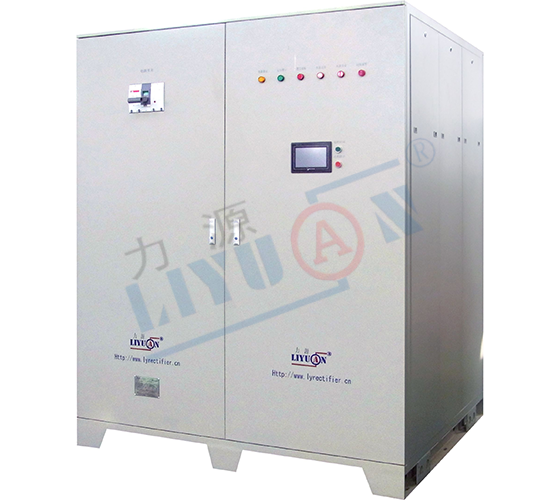Plating is a surface covering in which a metal is deposited on a conductive surface. Plating is used to decorate objects, for corrosion inhibition, or to improve solderability, to harden, to reduce friction, to improve paint adhesion, to alter conductivity, and for a variety of other purposes.
In some forms of plating electrical current is used to deposit the coating material onto the conductive part. Parts are dipped into a bath or tank where direct current (DC) is applied by the plating rectifier between the parts and electrode (anode and cathode DC arrangement). The coating, driven by the electric field, is attracted to the conductive part and is deposited on it. Depending upon the specific coating requirements, the DC voltage and ripple voltage are closely controlled and filtered to ensure a high quality finish.
Spang Power Electronics provides Power Systems configured as plating rectifiers in six (6) pulse, twelve (12) pulse, and DC chopper configurations with precise voltage control and ripple filtering when necessary for plating applications.


A high-frequency switching-mode power supply (HF-SMPS) converts AC or DC…
Surface treatment is a crucial process that plays a significant…
Liyuan Haina Rectifier, the professional manufacturer in IGBT and SCR rectifier, committed to providing you with quality solutions and products.
Get more details? We’ll response as soon as possible (within 12 hours).
Liyuan Haina Rectifier, the professional manufacturer in IGBT and SCR rectifier, committed to providing you with quality solutions and products.
Get more details? We’ll response as soon as possible (within 12 hours).